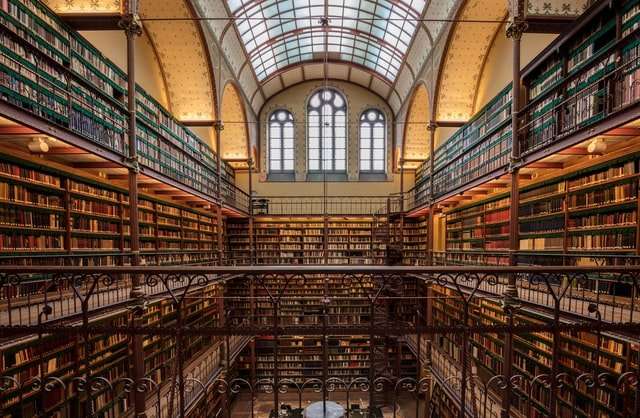If you are looking to improve your artistic skills, then this is the site for you. Our blog covers everything from art terms and techniques to how to improve your art skills. For example, if you want to learn about composition then you can read a post on that subject which will give you all the information you need to understand why it is important and how to use it in your own art work.
As an artist, there is always room for improvement and we hope that our blog can help you develop and become the best artist that you can be.
If you are not an artist but have a passion for art in general then our blog is still relevant as it provides insight into a profession that most people have little or no knowledge of. Our blog also brings you up-to-date with news on exhibitions, events and shows so that you do not miss out on any of the action.
We hope that in time, our blog will become an authority on art terms and techniques and serve as a resource for all artists wanting to improve their work.
A large number of people are drawn to the art world however, it is not always easy to find information on how to get started. I intend this blog to be a part of that solution.
This blog aims to cover topics relating to all aspects of art, as well as advice on how to get started, and for more experienced artists, how to improve their skill.
I will be working with a variety of media and have been drawing since childhood – so I hope my experience may prove useful.
The topics I intend to cover range from the basics such as anatomy, perspective and color theory, through to advanced topics such as artistic skills and creating a portfolio. While aspects of art may seem difficult at first, with practice they become easier and should not be intimidating or discouraging.
The word “Art” is an accepted term of definition for a certain area of study. It can be defined as the skills and techniques that are used to create visual and auditory pieces. This can also be known as “Fine Arts”. Art skills are all about improving your overall quality of life in many ways, because art is a universal language in which we express ourselves. However, Fine Arts is not the only way in which you can develop yourself into a better person. The arts are very broad and contain many different things, but they are also made up of smaller components that have their own names.
The term “Fine Arts” includes Art History, Graphic Design, Painting, Sculpture, Music Composition, Photography and Dance among others. Although all of these areas are different from one another, they all share common ground in the sense that they involve creating something from nothing (or near to nothing). They involve taking raw materials such as paint or clay or metal and turning them into something else entirely.
You will find that when you look at artists’ work it is quickly obvious whether or not they know what they’re doing. Generally speaking any good artist will have a firm grasp on the fundamentals of their art form and will use them to great effect.*
It’s not only beneficial to know how to draw, however you’re doing it; it’s also beneficial to learn how to draw in different ways. The way you learn how to draw is going to be personal, and you should do what works for you. Some people go out of their way to get a mentor or teacher, but that’s not always the best option. Some people prefer learning on their own; others like taking classes.
The fundamentals of art are good for anyone who wants to learn how to draw better, regardless of the art form. If you want your drawings to look accurate and realistic, then you’ll want to understand how light affects objects and the best ways of achieving that effect in your drawings. If you want your drawings to be fantastical and imaginative, then you’ll need a good grasp on proportion, perspective, and shape.
You can find some great books on drawing out there that will teach you a lot about all kinds of aspects of drawing. Also try looking around at some art forums where artists talk about their work and teach each other. You can learn some really valuable things just by observing other artists and listening in on the conversation they have with each other.*
In my previous article on Art Terms I wrote about the most common of art terms and their definitions. In this post, I will share with you a few more words to add to your artistic vocabulary.
Terracotta – Terracotta (or terra cotta) is the name for a type of clay that is used for making pottery. The word terracotta is from Italian meaning “baked earth”, from the Latin word “terra cotta” which means baked earthenware.
Terrazzo – Terrazzo is a composite building material made from marble chips, colored with powdered glass, colored cement and epoxy resin or polyester resin, or a combination of these materials. Mixing crushed marble into a concrete mixture then pouring it into molds made of wood or steel produces strong floor slabs and wall panels.
Aesthetics – The philosophy of aesthetics looks at the nature of beauty, art and taste. It asks questions such as: what is art? what makes something beautiful? what is good taste in art?
Aesthetic – The adjective aesthetic refers to things relating to the sense of sight, hearing or touch that make one feel pleasure, such as beautiful objects or music. It can also mean having an appreciation for beauty
Are You Looking For Art Instruction?
Art is one of the most popular hobbies in the world, and for many people it’s a passion that never goes away. Having the desire to improve your skills doesn’t necessarily mean you have to enroll in art school, however; there are plenty of resources available online for teaching yourself how to draw and paint. Here are some helpful tips:
Many people find it helpful to draw with others or participate in an artist group. This can be as simple as sharing your artwork with your friends and family, or you might consider getting involved in local art clubs or community centers. Participating in these settings can help you form connections with like-minded people and learn from each other’s strengths.
If you’re looking for more structured instruction, there are many drawing and painting classes all over the world that you can take advantage of. Many colleges offer classes that are open to the public at low or no cost, or you may be able to find places that offer private lessons in your area. Professionals often start out this way before beginning their careers as working artists, so don’t hesitate to sign up for some courses offered by local universities if they fit into your schedule!
You can also find a variety of lesson plans online. These websites feature
I can be a good artist. I have a lot to learn, but with the help of my friends and family, I can make it.
It all started when I was four years old, I loved art and I always drew on everything that I could find. My birthday was coming and I was asking for drawing supplies. My parents bought me crayons, pencils and coloring books. I used to draw all day long. I loved it so much that when my mom asked me what movie did I wanted to see, I told her a drawing one.
When I went to high school, my life changed completely… **


